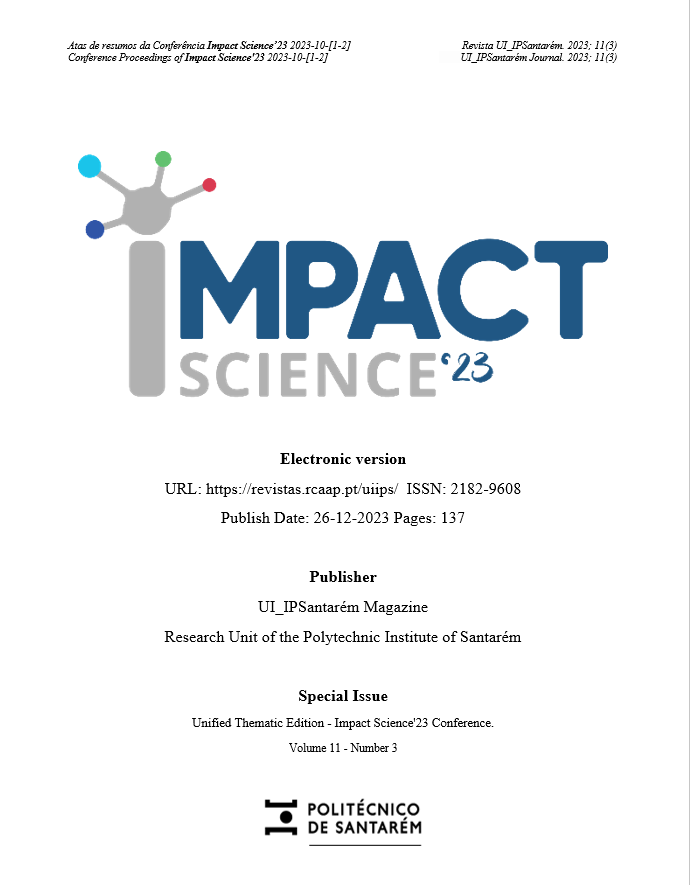Ground Reaction Forces in Gait of Elderly Individual with Knee Arthroplasty: Case Study
DOI:
https://doi.org/10.25746/ruiips.v11.i3.32495Keywords:
Total Knee Arthroplasty, Knee, Eldery, Ground Reaction ForcesAbstract
Gait assessment is a crucial factor in measuring postoperative outcomes of Total Knee Arthroplasty (TKA). This surgical option is intended for patients with advanced stages of knee joint degeneration, involving the complete replacement of the joint with a prosthesis to restore movement and improve the patient's quality of life. In Portugal, between the years 2021 and 2023, 3,494 TKAs were performed. The main advantages of this surgical option focus on pain reduction, improvement of biomechanical function, and enhanced quality of life. Kinetics is the area of biomechanics that aims to study the forces acting on movement, which is fundamental to its understanding. One of the possibilities for studying this area is the analysis of Ground Reaction Forces (GRF). These forces are associated with bone hypertrophy, making them crucial in understanding the role of physical activity in bone health. The objective of this case study was to assess and compare GRFs between lower limbs with and without TKA. A 68-year-old male participant was included, who performed a single continuous gait session at his natural pace for approximately 30 seconds. Angular velocity data for the three motion axes were collected using the Phyphox application. The data were processed in the software Scilab-2023.0.0 (64-bit), and the GRFs were calculated for the three axes. Regarding the gait cycle, the participant exhibited a shorter stance phase in both lower limbs compared to the gait pattern of healthy adults. In the limb without TKA, this phase ended at 53%, and in the limb with TKA at 49%, both values being lower than the standard 62%. Concerning the GRFs, in the antero-posterior axis, the limb without TKA experienced more than double the braking force during the stance phase compared to the prosthetic limb. In the vertical axis, the limb without TKA exerted more GRF when touching the heel to the ground. In the medio-lateral axis, during the swing phase, more gait irregularities were observed, with the limb without TKA showing negative GRF values, implying greater recruitment of the posterior muscles, and the limb with TKA exhibiting positive values, indicating greater recruitment of the anterior muscles. Based on the present results, it is recommended that the participant performs specific exercises for muscular strengthening, aiming to strengthen the muscle groups involved in stabilizing these joints, i.e., knee and ankle. Despite the growing interest and number of studies analyzing gait in patients with TKA, the need to continue investigating this topic remains due to the low number of participants included in published studies.
Downloads
Published
How to Cite
Issue
Section
License
Copyright (c) 2023 Inês Leal, Bárbara Tavares, Cristiana Mercê, Marco Branco

This work is licensed under a Creative Commons Attribution-NonCommercial-NoDerivatives 4.0 International License.
Authors publishing in this journal agree to the following terms:
Authors retain copyright and grant the journal the right of first publication, with the article simultaneously licensed under the Creative Commons Attribution License that allows sharing of the work with acknowledgement of authorship and initial publication in this journal.
Authors are permitted to enter into additional contracts separately for non-exclusive distribution of the version of the article published in this journal (e.g., publish in an institutional repository or as a book chapter), with acknowledgment of authorship and initial publication in this journal.
Authors have permission and are encouraged to publish and distribute their work online (e.g., in institutional repositories or on their personal webpage) at any point before or during the editorial process, as this may generate productive changes, as well as increase the impact and citation of the published work.



